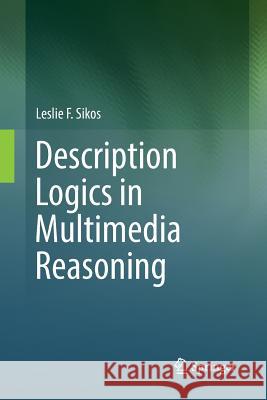Description Logics in Multimedia Reasoning » książka
topmenu
Description Logics in Multimedia Reasoning
ISBN-13: 9783319853086 / Angielski / Miękka / 2018 / 205 str.
Description Logics in Multimedia Reasoning
ISBN-13: 9783319853086 / Angielski / Miękka / 2018 / 205 str.
cena 424,07 zł
(netto: 403,88 VAT: 5%)
Najniższa cena z 30 dni: 421,13 zł
(netto: 403,88 VAT: 5%)
Najniższa cena z 30 dni: 421,13 zł
Termin realizacji zamówienia:
ok. 20 dni roboczych.
ok. 20 dni roboczych.
Darmowa dostawa!
Kategorie:
Kategorie BISAC:
Wydawca:
Springer
Język:
Angielski
ISBN-13:
9783319853086
Rok wydania:
2018
Wydanie:
Softcover Repri
Ilość stron:
205
Waga:
0.31 kg
Wymiary:
23.39 x 15.6 x 1.17
Oprawa:
Miękka
Wolumenów:
01
Dodatkowe informacje:
Wydanie ilustrowane











